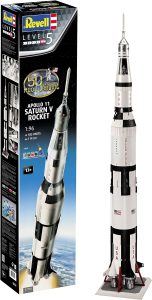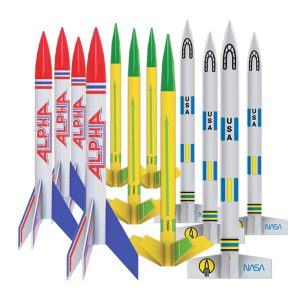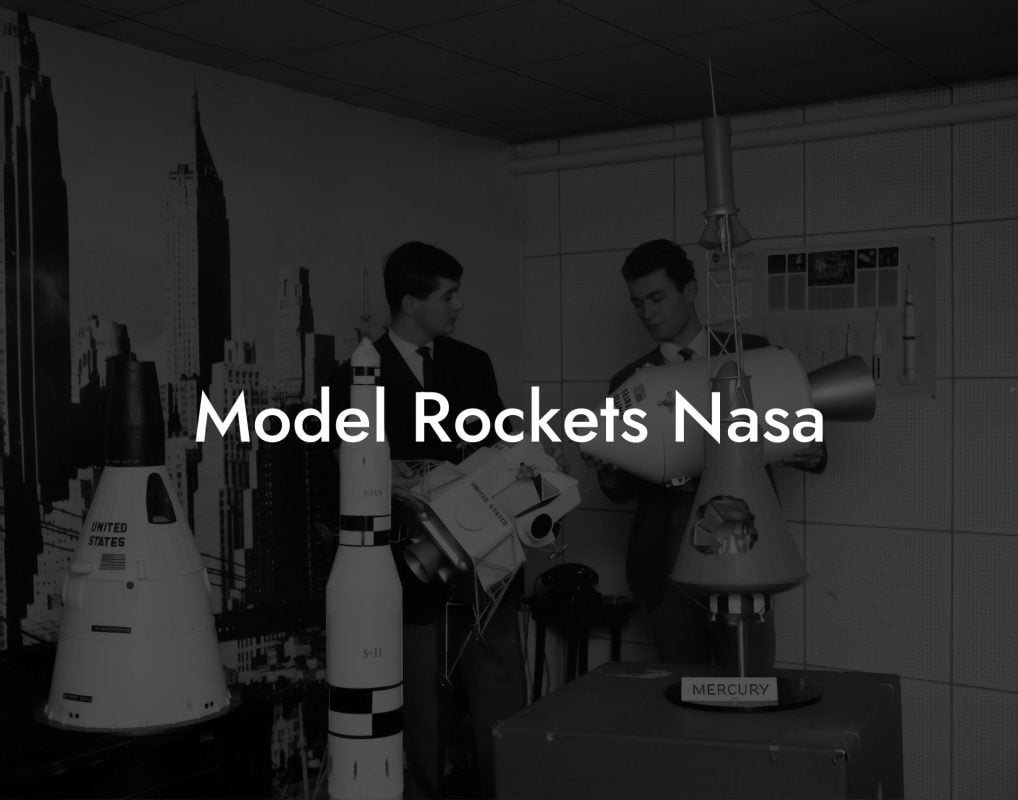Imagine the thrill of launching a model rocket into the sky, watching it soar to incredible heights, and experiencing the rush of excitement as it returns to Earth. For many, model rocketry is more than just a hobby – it's a passion that combines science, technology, engineering, and mathematics (STEM) with creativity and adventure. In this comprehensive guide, we'll delve into the world of U.S. military model rockets, exploring their history, design, and functionality.
Quick Links to Useful Sections
- A Brief History of U.S. Military Model Rockets
- Design and Functionality of U.S. Military Model Rockets
- Types of U.S. Military Model Rockets
- Building and Customizing U.S. Military Model Rockets
- Resources and Communities for U.S. Military model rocket Enthusiasts
- Frequently Asked Questions about U.S. Military Model Rockets
- Conclusion
- Resources and Community Support
A Brief History of U.S. Military Model Rockets
The development of model rockets in the United States can be traced back to the early 20th century, when pioneers like Robert Goddard and G. Harry Stine experimented with liquid-fueled rockets. During World War II, the U.S. military recognized the potential of rocketry for military applications, leading to the development of the first guided missiles. In the post-war era, model rocketry became a popular hobby, with companies like Estes and Centuri producing kits and accessories for enthusiasts.
The U.S. military continued to play a significant role in the development of model rocketry, with organizations like the National Advisory Committee for Aeronautics (NACA) and the National Aeronautics and Space Administration (NASA) contributing to advancements in rocket technology. Today, model rockets are used not only for recreation but also for educational purposes, research, and even military training.
Design and Functionality of U.S. Military Model Rockets
Military model rockets are designed to mimic the performance and characteristics of actual military rockets, with a focus on realism, accuracy, and durability. These models typically feature detailed replicas of military rockets, including scale models of the Atlas, Titan, and Minuteman missiles.
The design of military model rockets involves careful attention to detail, with considerations such as:
Looking For The Best Model Rocket Kits? You'll Love These:
- Scale accuracy: Military model rockets are designed to scale down the actual dimensions of military rockets, ensuring a high degree of realism.
- Materials: Models are constructed from durable materials like plastic, resin, or wood, ensuring they can withstand the stresses of launch and recovery.
- Propulsion systems: Military model rockets often feature advanced propulsion systems, including liquid-fueled engines or hybrid motors.
- Guidance systems: Some models incorporate guidance systems, such as GPS or inertial navigation, to simulate the actual performance of military rockets.
The functionality of military model rockets is equally impressive, with many models capable of reaching altitudes of several thousand feet and achieving speeds of up to Mach 1.
Types of U.S. Military Model Rockets
There are several types of U.S. military model rockets, each with its own unique characteristics and features. Some of the most popular include:
- Intercontinental Ballistic Missiles (ICBMs): Models of ICBMs like the Minuteman III and Titan II, featuring advanced guidance systems and multiple warheads.
- Submarine-Launched Ballistic Missiles (SLBMs): Models of SLBMs like the Trident II, designed to be launched from submarines and featuring advanced propulsion systems.
- Surface-to-Air Missiles (SAMs): Models of SAMs like the Patriot and Hawk, designed to intercept and destroy enemy aircraft and missiles.
- Cruise Missiles: Models of cruise missiles like the Tomahawk, designed to attack ground targets with precision-guided munitions.
These models offer a fascinating glimpse into the world of military rocketry, allowing enthusiasts to explore the design, functionality, and history of these powerful weapons.
Building and Customizing U.S. Military Model Rockets
For many enthusiasts, building and customizing military model rockets is a significant part of the hobby. This can involve:
- Kits and accessories: Using commercial kits and accessories to build and customize models, including decals, paint, and detailing materials.
- Scratch-building: Creating models from scratch, using materials like wood, plastic, or resin to fabricate parts and components.
- Upgrades and modifications: Enhancing models with advanced features, such as GPS guidance or thrust vectoring.
Building and customizing military model rockets requires a range of skills, including model-making, electronics, and engineering. However, the rewards are well worth the effort, as enthusiasts can create highly realistic and detailed models that showcase their craftsmanship and attention to detail.
Resources and Communities for U.S. Military model rocket Enthusiasts
There are numerous resources and communities available for enthusiasts of U.S. military model rockets, including:
- Online forums and discussion groups: Websites like Reddit's r/modelrockets and online forums dedicated to military model rocketry.
- Clubs and organizations: Local and national clubs, such as the National Association of Rocketry (NAR) and the Tripoli Rocketry Association (TRA).
- Conventions and events: Annual events like the NAR National Championships and the TRA Launch Festival, which bring enthusiasts together to share knowledge, showcase models, and launch rockets.
These resources provide a wealth of information, support, and camaraderie for enthusiasts, helping to foster a sense of community and shared passion for U.S. military model rockets.
Frequently Asked Questions about U.S. Military Model Rockets
Here are some frequently asked questions about U.S. military model rockets:
1. What is the most popular type of military model rocket?
The most popular type of military model rocket is the ICBM, with models like the Minuteman III and Titan II being highly sought after by enthusiasts.
2. How accurate are military model rockets?
Military model rockets can be highly accurate, with many models featuring scale-accurate designs, detailed replicas of military rockets, and advanced propulsion systems.
3. Can I build my own military model rocket?
Yes, many enthusiasts build their own military model rockets from scratch, using materials like wood, plastic, or resin to fabricate parts and components.
4. Are military model rockets safe?
When built and operated correctly, military model rockets can be safe. However, enthusiasts must follow safety guidelines and precautions to avoid accidents and injuries.
5. Can I launch my military model rocket anywhere?
No, military model rockets should only be launched in designated areas, such as model rocket launch sites or clubs, and with proper safety precautions and permits.
Conclusion
U.S. military model rockets offer a fascinating glimpse into the world of military rocketry, combining STEM principles with creativity and adventure. Whether you're a seasoned enthusiast or just starting out, this comprehensive guide has provided a wealth of information on the history, design, and functionality of military model rockets.
From building and customizing models to exploring the world of military rocketry, there's something for everyone in this exciting and rewarding hobby. So why not join the ranks of military model rocket enthusiasts and experience the thrill of launching your own scale model of a U.S. military rocket?
Resources and Community Support
For more information on U.S. military model rockets, including resources, tutorials, and community support, please visit our website at [website URL].
Join our community of enthusiasts and stay up-to-date with the latest news, tutorials, and resources on U.S. military model rockets.
Looking For The Best Model Rocket Kits? You'll Love These:
Useful Interruption: Dive deeper into the world of Model Rockets with our most popular sections. If there is anything you think is missing or anything you would love for us to write about, just give us a shout.
- Getting Started & Basics With Model Rockets
- Model Rocket Design, Build & Customization
- Model Rocket Propulsion & Engine Technology
- Model Rocket Launch Techniques & Recovery
- Model Rocket Advanced Rocketry & Innovations
- Model Rocket DIY and Customization
- Model Rocket Equipment Reviews & Digital Tools
- Community, Competitions & Education
- Model Rocket Troubleshooting & FAQs
- Model Rocket Bonus/Seasonal & Niche Topics
A group of model rocket enthusiasts gathered at a field for their weekly launch event. Among them was Dave, a seasoned builder known for pushing the limits of hobby rocketry. This time, he had outdone himself.
“Ladies and gentlemen,” Dave announced, dramatically pulling a cloth off his latest creation, “I present to you: The Kraken!”
The crowd gasped. This wasn’t just a model rocket, it was a monster. The thing stood 8 feet tall, had six clustered engines, and was covered in enough duct tape to qualify as a classified aerospace project.
“Dave,” muttered Steve, the cautious safety officer, “Have you, uh… done the math on this?”
“Math?” Dave scoffed. “I built it in my garage at 3 a.m. with parts from eBay. This is an art piece, Steve.”
The countdown began.
5…
4…
3…
2…
1…
The engines ignited with a BOOM, and The Kraken shot up… kind of. It immediately did a violent barrel roll, narrowly missing the spectators before skyrocketing at an angle that could only be described as “legally questionable.”
The crowd collectively ducked as The Kraken flew straight over the adjacent cornfield, where Old Man Jenkins, the grumpiest farmer in town, was minding his business.
KABOOM!
The rocket disappeared behind the barn. A moment later, a flaming piece of Estes igniter wire landed at Steve’s feet. The silence was deafening.
And then, an unmistakable sound echoed across the field.
Jenkins’ shotgun being cocked.
“DAVE!!!” Steve shouted. “RUN.”
And that was the day Dave invented the first-ever biologically powered rocket booster: pure adrenaline.
To this day, nobody knows where The Kraken landed, but legend has it, it still haunts the skies, terrifying unsuspecting drones and low-flying birds.















